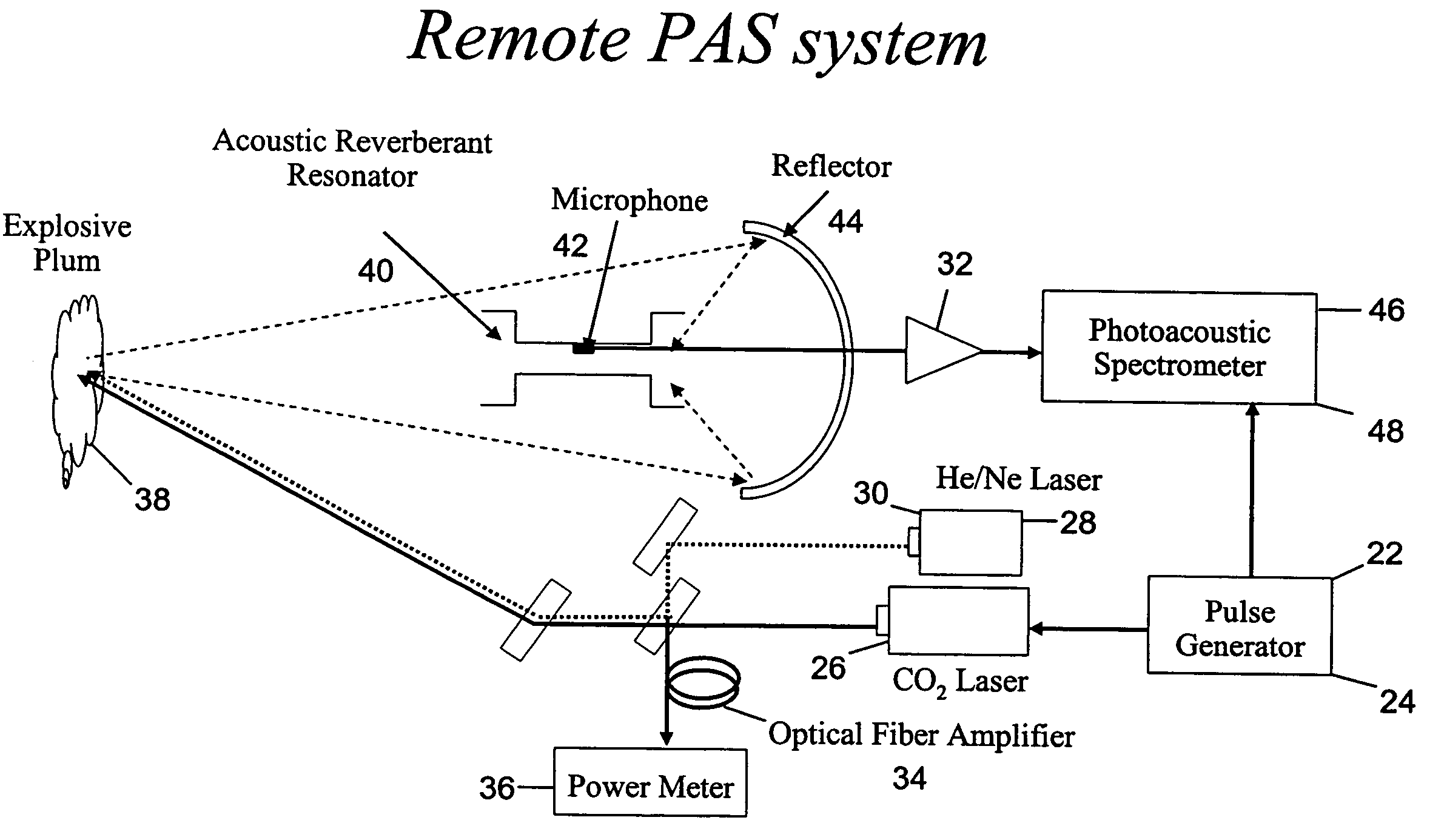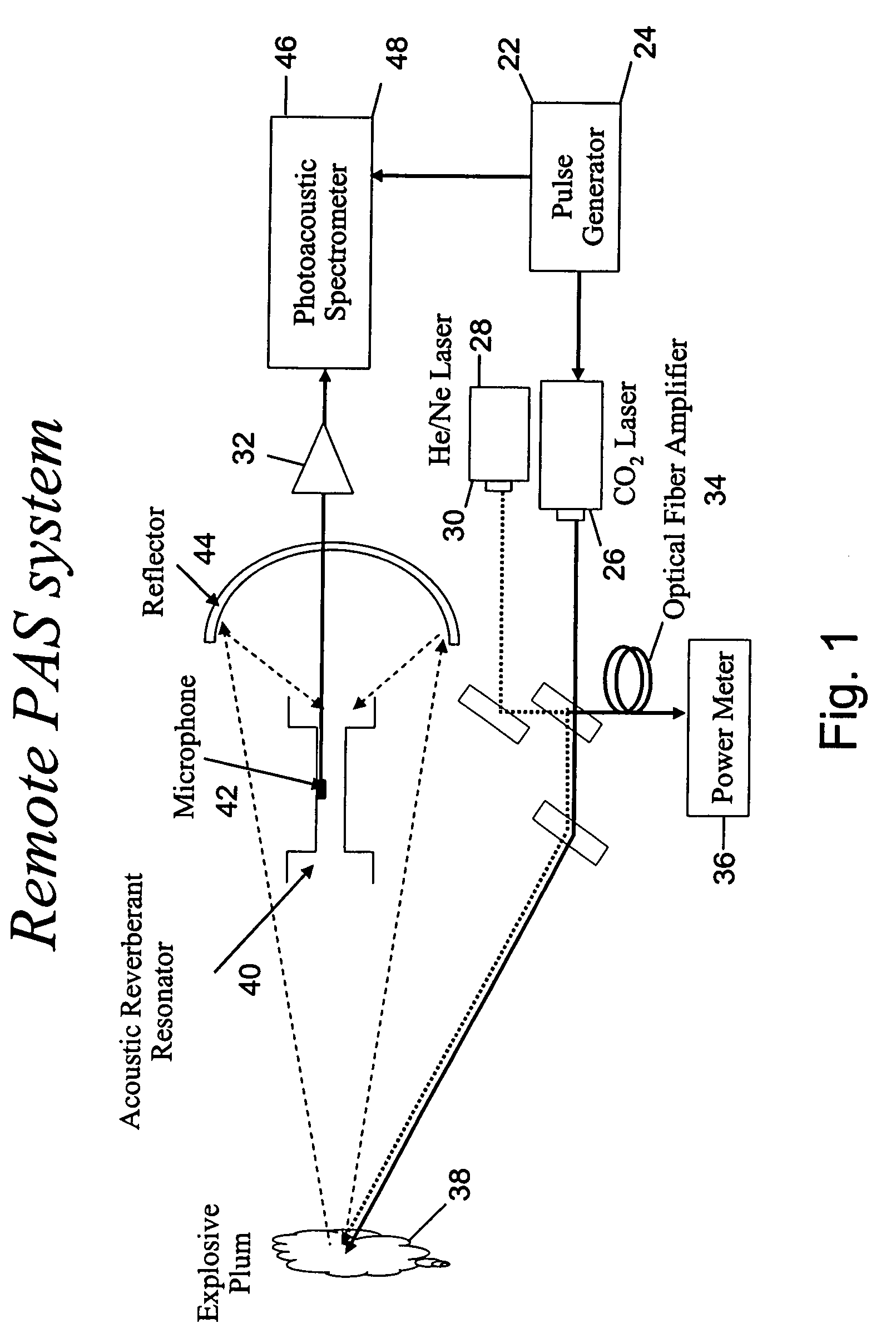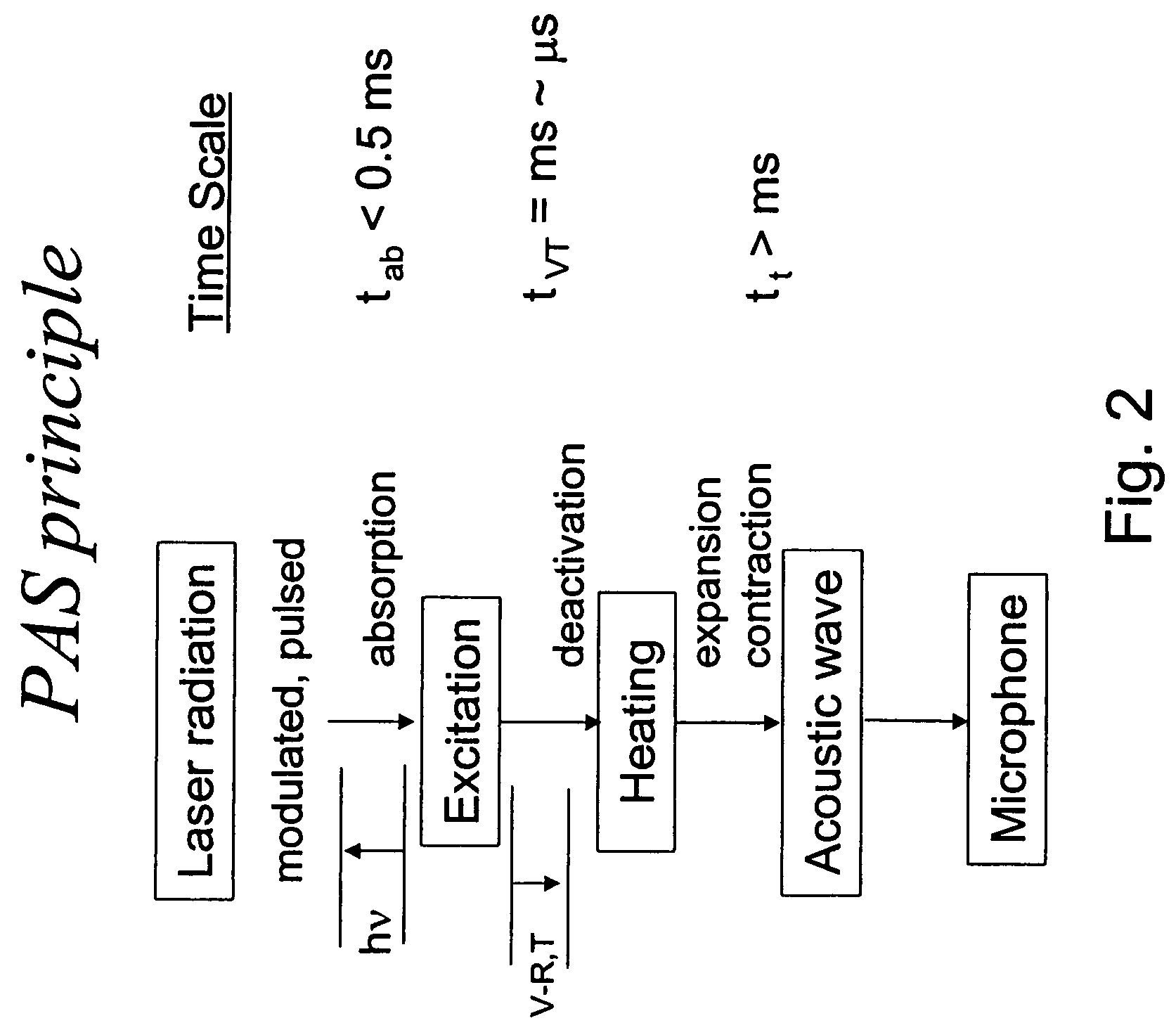Photoacoustic spectroscopy system and technique for remote sensing of explosives and toxic chemicals
a technology of photoacoustic spectroscopy and remote sensing, applied in the field of photoacoustic spectroscopy, can solve the problems of reducing the concentration of vapor, reducing the signal-to-noise ratio, and increasing the threat of terrorist attacks, so as to achieve the effect of convenient us
- Summary
- Abstract
- Description
- Claims
- Application Information
AI Technical Summary
Benefits of technology
Problems solved by technology
Method used
Image
Examples
Embodiment Construction
[0031]The following is a detailed description and explanation of the preferred embodiments of the invention and best modes for practicing the invention.
[0032]FIG. 1 illustrates a photoacoustic spectroscopy (PAS) system 20 and technique, which provides an instrument, equipment, device, process and method for remote sensing of explosives, toxic chemicals, biological agents, and other materials. The PAS system and technique can have a pulse generator 22 with a chopper 24, a laser 26, a laser guiding and tracking system (equipment) 28 which can comprise a visible helium neon (He / Ne) laser 30 and a sensor 32, an optical fiber amplifier 34, a power meter 36, a target 38 which can comprise an explosive plum, an acoustic reverberant resonator 40 with a cylindrical tube, an acoustic transducer comprising a microphone 42, a reflector 44, and data acquisition and analysis equipment 46 which can comprise a photoacoustic spectrometer 48 and a central processing unit (CPU) with a monitor or scree...
PUM
| Property | Measurement | Unit |
|---|---|---|
| wavelengths | aaaaa | aaaaa |
| frequency | aaaaa | aaaaa |
| chopper frequency | aaaaa | aaaaa |
Abstract
Description
Claims
Application Information
 Login to View More
Login to View More - R&D
- Intellectual Property
- Life Sciences
- Materials
- Tech Scout
- Unparalleled Data Quality
- Higher Quality Content
- 60% Fewer Hallucinations
Browse by: Latest US Patents, China's latest patents, Technical Efficacy Thesaurus, Application Domain, Technology Topic, Popular Technical Reports.
© 2025 PatSnap. All rights reserved.Legal|Privacy policy|Modern Slavery Act Transparency Statement|Sitemap|About US| Contact US: help@patsnap.com



